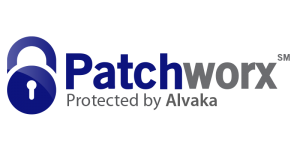Comparing On-Premises vs. Cloud-Based Ransomware Recovery Solutions
When it comes to fortifying your organization’s data against ransomware attacks, the debate between on-premises vs. cloud recovery solutions is a critical one. As an IT management and network services provider, we understand that making the right choice can mean the difference between a swift recovery and catastrophic data loss. In this introduction, we’ll navigate the landscape of ransomware threats and outline the primary considerations to inform your decision on whether to implement an on-premises or a cloud-based recovery strategy.
Assessing the Battlefield: The Growing Threat of Ransomware
Ransomware is no longer a mere nuisance; it has evolved into a sophisticated and disruptive force that can grind business operations to a halt. Our experience shows that an attack can emanate from anywhere, at any time, making proactive defense and recovery planning more important than ever. As we analyze the trends and tactics of these threats, our focus remains on delivering robust recovery solutions that meet the escalating challenges posed by ransomware.
Choosing Your Defense: On-premises vs. Cloud Recovery Solutions
Deciding between on-premises and cloud recovery options requires careful consideration of your organization’s unique needs. On-premises solutions offer a level of control and security that is particularly suited to organizations with sensitive data, while cloud recovery provides scalability and flexibility. As we compare these approaches, our goal is to empower you with the information necessary to choose a solution that gives you confidence in your ransomware defense strategy.
Understanding the Stakes: Key Considerations in Ransomware Recovery
The implications of falling victim to a ransomware attack are profound, extending beyond financial loss to reputational damage and operational disruptions. Recovery is not merely about restoring data; it’s about resuming mission-critical functions without delay. By understanding the key considerations, such as recovery time objectives, data integrity, and compliance requirements, we can craft a ransomware recovery plan that safeguards your organization’s future. As we navigate these high stakes, our priority-based approach aims to ensure that your most critical systems are resilient in the face of ransomware threats.
The Fortress Approach: On-Premises Ransomware Recovery Solutions
The Immunity of Isolation: Advantages of On-Premises Solutions
An on-premises ransomware recovery solution can offer a buffer of protection by storing data in a physically isolated environment. As we navigate the delicate cybersecurity landscape, our on-premises setups provide a layer of insulation from online threats, effectively reducing the risk of remote exploits. Moreover, maintaining control over your data management and security policies allows for a tailored approach, perfectly fitting your organization’s unique needs. Therefore, the concrete control and customization available with on-prem bring undeniable advantages to the table.
Managing the Moat: Challenges and Limitations of On-Premises Recovery
While on-premises solutions provide significant benefits, we acknowledge they come with a set of challenges. Upfront investment in infrastructure is substantial, and ongoing maintenance costs can accumulate. Additionally, the need for specialized staff, capable of managing complex recovery systems, poses a resource challenge for smaller businesses. The physicality of on-premises solutions also caps the scalability, which may not always align with business growth trajectories or rapid data expansion.
Case Studies and Expert Opinions: On-Premises Recovery in Action
Our experience has shown that on-premises strategies reinforce data sovereignty. One particular case highlights a financial institution that was able to thwart a ransomware attack due to its robust on-premises back-up systems. Expert opinion further consolidates our stance, endorsing that on-premises solutions, when implemented correctly, form a resilient defense against ransomware intrusions.
The Agility of the Cloud: Cloud-Based Ransomware Recovery Solutions
Scaling the Defense: Benefits of Cloud-Based Recovery Strategies
Cloud-based recovery solutions emerge as a versatile counterpart to on-premises methods. The scalability of cloud services allows our clients to grow and adapt without the burden of physical hardware limitations. Moreover, cloud providers typically offer rolling updates and patch management, ensuring defenses are up-to-date against the latest threats. Additionally, the pay-as-you-go model offers cost efficiency, especially for organizations with fluctuating data recovery needs.
Cloud Coverage: Potential Pitfalls and Security Considerations
Nevertheless, as much as cloud-based solutions advocate for flexibility, we must remain vigilant to potential pitfalls. Data hosted on cloud platforms may be subject to varying regulations, which could complicate compliance postures. Further, reliance on third-party providers introduces a shared responsibility model, meaning our diligence in provider selection and understanding service-level agreements is paramount.
Real-World Successes: How Cloud-Based Solutions Mitigate Ransomware Threats
In our practice, we have witnessed the cloud’s capacity to offer swift recovery from ransomware attacks. A recent engagement involved deploying a cloud-based solution for a retail chain hit by ransomware, which resulted in minimal downtime due to the rapid restoration capabilities of cloud environments. Such achievements showcase the cloud’s effectiveness in ransomware mitigation.
On-premises vs. Cloud Recovery Solutions: A Head-to-Head Comparison
Cost Implications and Operational Impact
- Initial Outlay: On-premises solutions demand a higher upfront investment compared to cloud services.
- Operational Flexibility: Cloud solutions provide on-demand scalability, a boon for dynamic business environments.
- Complexity Management: We advocate for on-premises solutions in scenarios requiring granular control over recovery processes.
- Economic Continuity: Cloud recovery services can adapt to budgetary constraints with their subscription models, affording predictability in expenses.
Assessing both on-premises and cloud recovery solutions reveals their respective strengths and limitations. Our expertise enables us to deliver thoughtful, customized strategies, whether leveraging the autonomous control of on-premises or harnessing the agility and cost-effectiveness of the cloud. Ultimately, our commitment is to equip your organization with a recovery solution that aligns with your risk profile, operational needs, and long-term vision for resilience against ransomware threats.
Did you know? On-premises ransomware recovery solutions offer the advantage of data isolation, creating a digital ‘moat’ to protect sensitive information from cyber threats.
Assessing Ransomware Recovery Strategies: On-premises vs. Cloud Solutions
The Verdict on On-premises vs. Cloud Recovery Solutions
When weighing ransomware recovery options, the decision to choose between on-premises vs. cloud recovery solutions must align with your organizational needs and capacity. In our exploration, we have scrutinized the robust isolation that on-premises solutions offer, ensuring high levels of control and security. Similarly, we’ve acknowledged how cloud recovery solutions provide unparalleled flexibility and scalability, vital in an era where threats evolve rapidly.
However, the ideal approach for your business may not rest at either extreme but in a strategic blend of both. Hybrid models that draw strengths from on-premises and cloud infrastructures are becoming increasingly mainstream, offering a balanced solution to protect against ransomware attacks.
Navigating the Cost-Benefit Landscape
Our head-to-head comparison reveals that cost factors for on-premises vs. cloud recovery solutions can vary significantly. While on-premises infrastructures may entail a heavier upfront investment, they can offer cost predictability and potentially lower long-term expenses. Conversely, cloud solutions often operate on an OPEX model, which may provide a cost-effective entry point and a pay-as-you-grow advantage, especially appealing for businesses with fluctuating demands.
Partnering for Success in Ransomware Recovery
Ultimately, what matters most is the resilience of your ransomware recovery strategy. At Alvaka, we strive to empower businesses with knowledge and cutting-edge solutions tailored to their unique landscapes. Whether you lean towards on-premises, favor the cloud, or opt for a hybrid recovery solution, we are dedicated to crafting a defense strategy that fortifies your data against the onslaught of ransomware attacks while ensuring business continuity and compliance.
Our expert team will collaborate with you to examine your risk profile, assess your IT architecture, and recommend the most effective recovery plan. We understand that every business is at a different point in their digital transformation journey. By aligning our services with your requirements, we ensure not only the recovery from potential threats but also the ongoing enhancement of your cybersecurity posture.
Taking the Next Steps with Alvaka
In this complex cybersecurity landscape, where the only constant is change, the debate on on-premises vs. cloud recovery solutions is more than a technical choice—it’s a strategic business decision. With Alvaka’s guidance, you can navigate this terrain confidently, knowing you have a partner that’s invested in your security and success. We invite you to continue the conversation with us, explore your options, and take proactive steps toward a ransomware-resilient future.
With the stakes so high, the time to fortify your network defenses is now. Align with us at Alvaka, leverage our expertise, and let’s work together to turn the tide against ransomware threats.
FAQ
What are the main threats associated with ransomware? ▼
Ransomware poses several threats, including the encryption of critical data, disruption of business operations, potential data breaches, and financial losses due to ransom payments and recovery efforts. Our focus is on understanding these threats to implement robust recovery solutions.
Can you explain the difference between on-premises and cloud recovery solutions? ▼
On-premises recovery solutions are deployed within a company’s own infrastructure, giving full control over the recovery environment. In contrast, cloud recovery solutions utilize off-site resources provided by cloud service providers, offering scalability and potentially lower maintenance costs.
What are the advantages of on-premises ransomware recovery solutions? ▼
The primary advantages include enhanced control over the security environment, data sovereignty, and often a tighter integration with existing infrastructure. On-premises solutions can offer a higher level of customization to meet specific security needs.
What challenges are associated with on-premises recovery solutions? ▼
On-premises solutions can come with higher upfront costs, more complex maintenance and scaling challenges, and may require a larger in-house IT team to manage effectively. Furthermore, they can be at risk if the physical site is compromised.
How do cloud-based recovery solutions help mitigate ransomware threats? ▼
Cloud-based recovery solutions leverage the scalability and flexibility of the cloud, offering rapid deployment and potentially more up-to-date defense mechanisms against new ransomware strains. They can also allow for quicker recovery times and streamlined management.
Are there security concerns with cloud-based recovery solutions? ▼
Yes, potential security concerns include the need to trust a third-party service provider with sensitive data and the complexities of ensuring data protection in a shared environment. However, with the right security measures in place, these concerns can be managed.
In a head-to-head comparison, how does the cost of on-premises vs. cloud recovery solutions stack up? ▼
Although on-premises solutions may have a higher initial cost due to hardware and infrastructure investments, cloud solutions typically operate on a subscription model that can introduce predictable, ongoing expenses. Ultimately, the total cost of ownership depends on several factors, including the scale and needs of the business.
Can you provide examples of successful on-premises ransomware recovery? ▼
We have case studies of clients who’ve effectively used on-premises solutions to recover from ransomware. They often highlight the importance of having robust backup systems and a well-drilled incident response process that ensures business continuity despite an attack.
Is it possible to combine on-premises and cloud-based solutions for ransomware recovery? ▼
Yes, a hybrid approach can offer the combined benefits of both on-premises and cloud solutions. This might involve keeping sensitive data on-premises while leveraging the cloud for scalability and redundancy, resulting in a comprehensive recovery strategy.
How should a company choose between on-premises and cloud recovery solutions? ▼
Choosing the right solution requires evaluating several factors, including the company’s size, budget, regulatory requirements, and the specifics of the IT environment. Consequently, it’s vital to assess both short-term and long-term business needs and security objectives when deciding on an approach.








 Smoke testing is a term used to describe the testing process for servers after patches are applied.
Smoke testing is a term used to describe the testing process for servers after patches are applied.  This is a basic cost calculator for you to compute your typical monthly cost for patching your servers, PCs, laptops, tablets and associated application software. It also forms the basis for you to begin calculating your Return on Investment for software patching, or for comparison with alternatives to the manual process of patching operating systems and application software—such as Patch Management as a Service, also known as Vulnerability Management as a Service.
This is a basic cost calculator for you to compute your typical monthly cost for patching your servers, PCs, laptops, tablets and associated application software. It also forms the basis for you to begin calculating your Return on Investment for software patching, or for comparison with alternatives to the manual process of patching operating systems and application software—such as Patch Management as a Service, also known as Vulnerability Management as a Service.